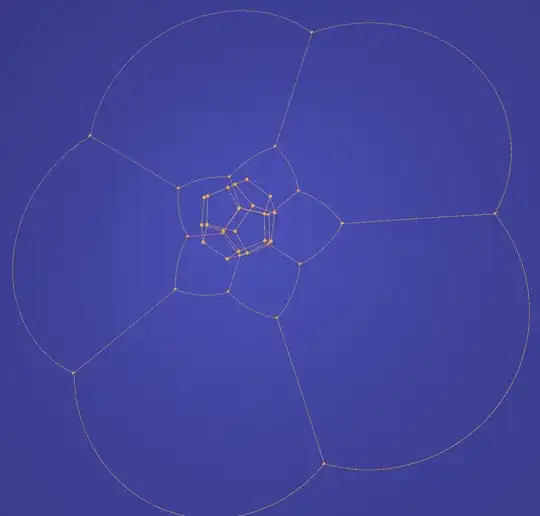I'm going to ask what I think is surely a silly and simple question but I can't for the life of me work this out. I am interested in stereographically projecting a dodecahedron to the plane (in an interactive computer program). This has been implemented and here is an example image:
Now, imagine that there were inscribed circles on the faces of the dodecahedron whose centres were the centres of the faces and which were tangent to the edges of the dodecahedron (their centres would be the red points in the image above). Stereographic projection projects circles to circles and so in the regions of the plane above we would expect to see inscribed circles.
We know that these circles would be tangent to the sides at the projections of the points which lie halfway along each edge of the dodecahedron and on this basis I computed these circles. However, the outcome is this:
As you can see, the inner circles are indeed tangent to the sides of the regions. However, the outer regions' circles are rather messy and definitely do not lie in the regions. Why might this be?
To be explicit, to compute the locations of these circles on the plane:
- For each face, I find three midpoints of edges on the outline of that face.
- I project these midpoints onto the plane stereographically.
- Three points define a circle and I compute this circle's centre and radius using the same idea as here. I'm fairly confident this last computation is bug-free and you can see that in the inner regions it does seem to be accurate.


